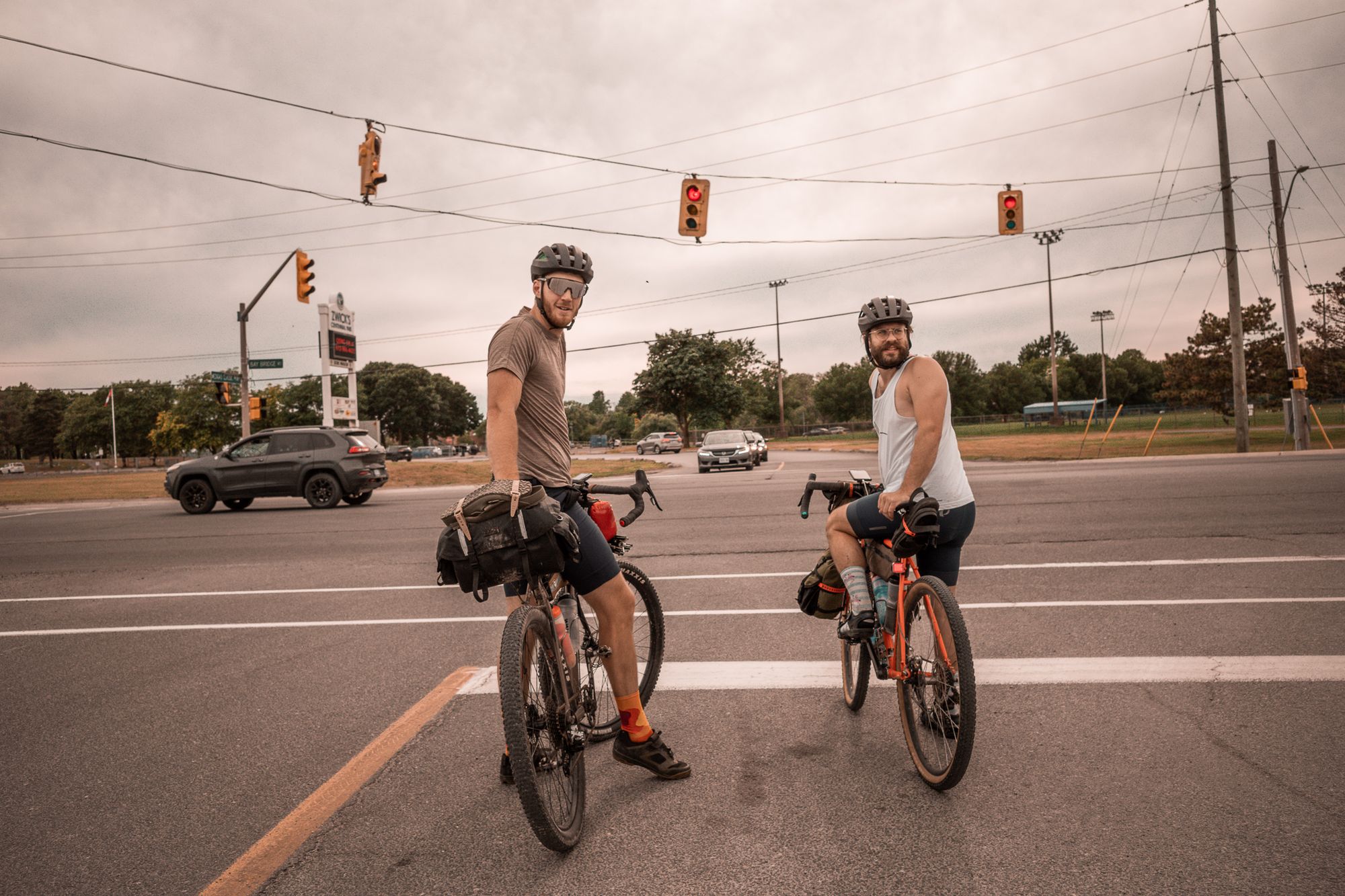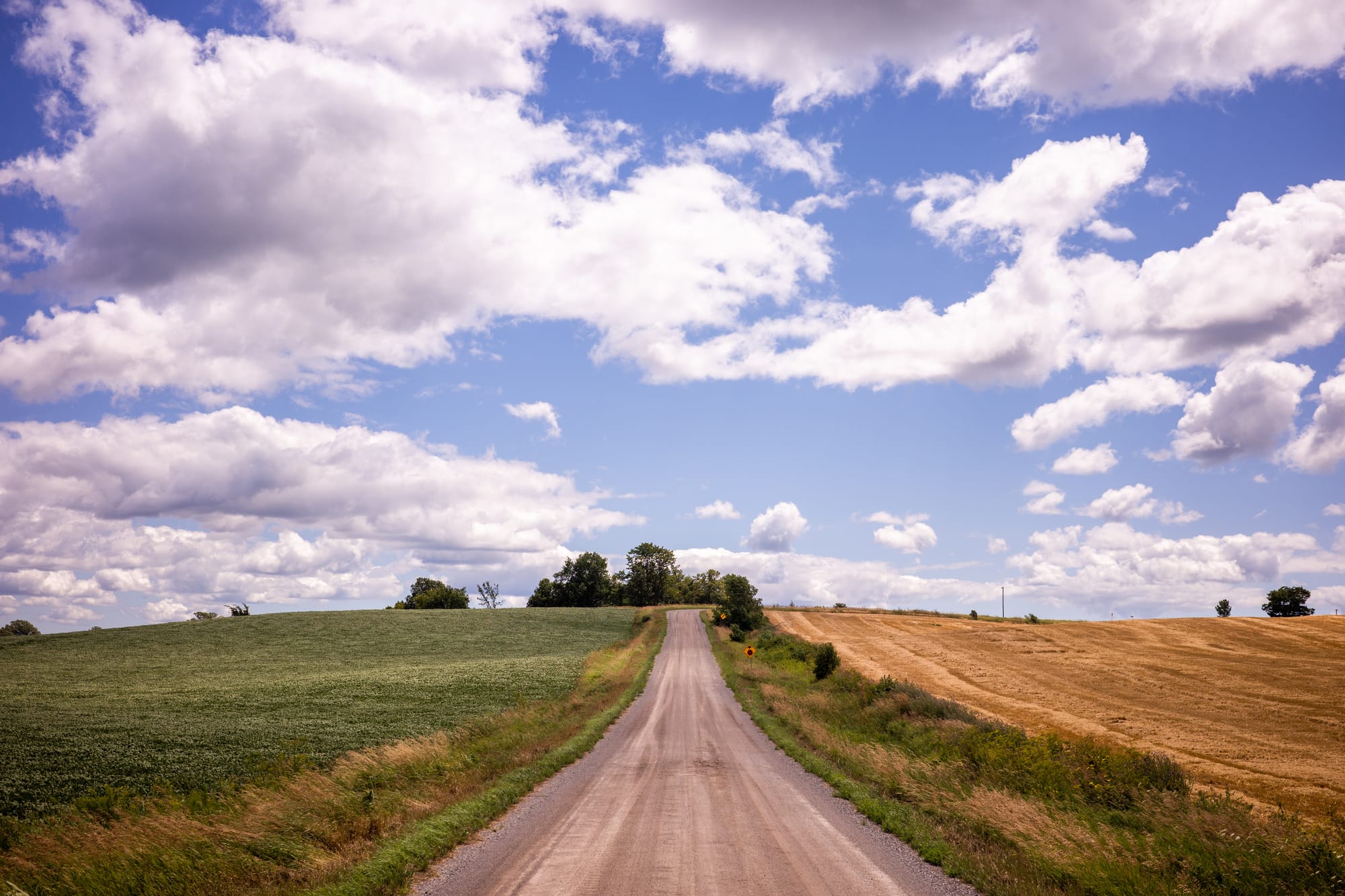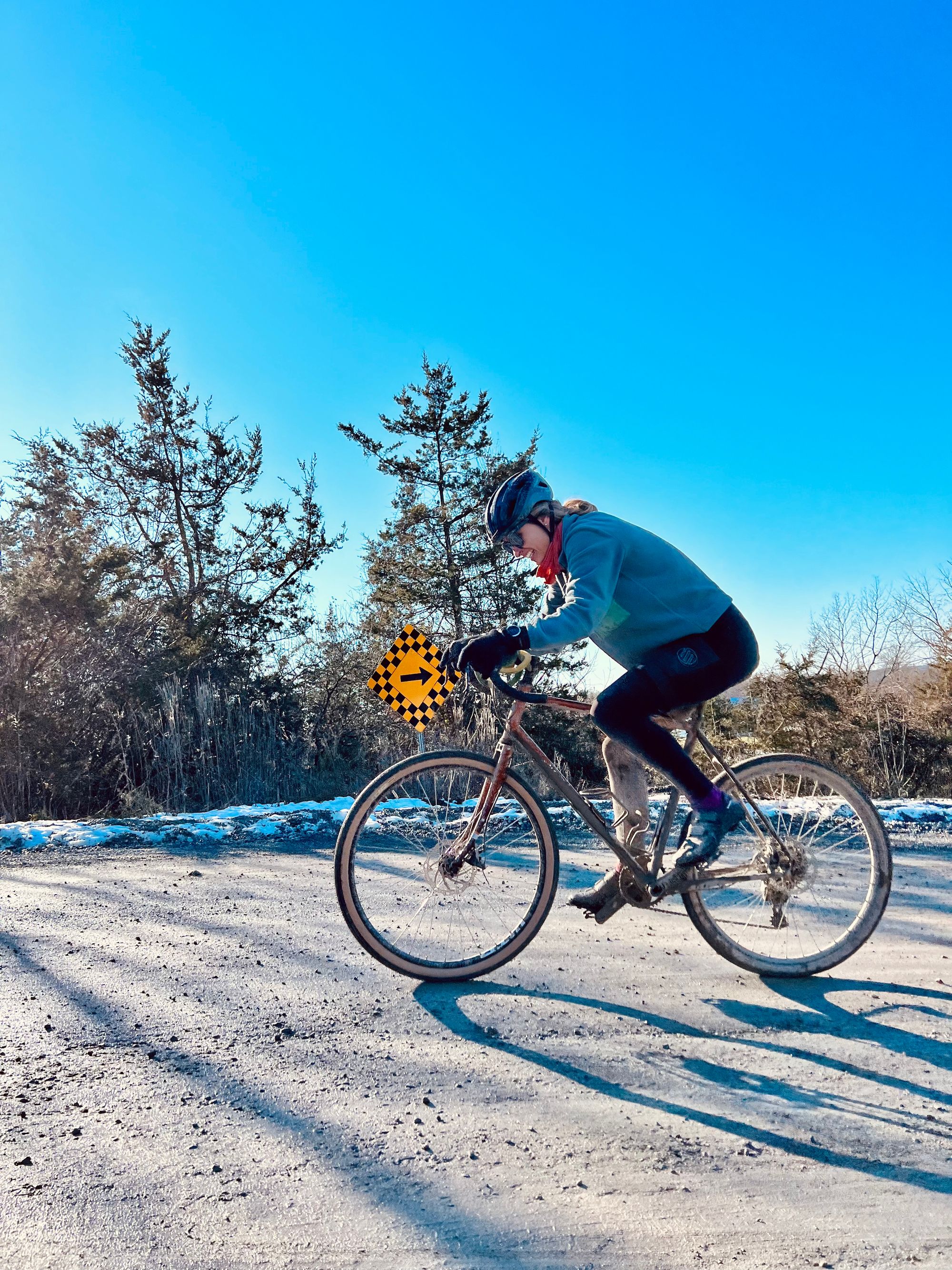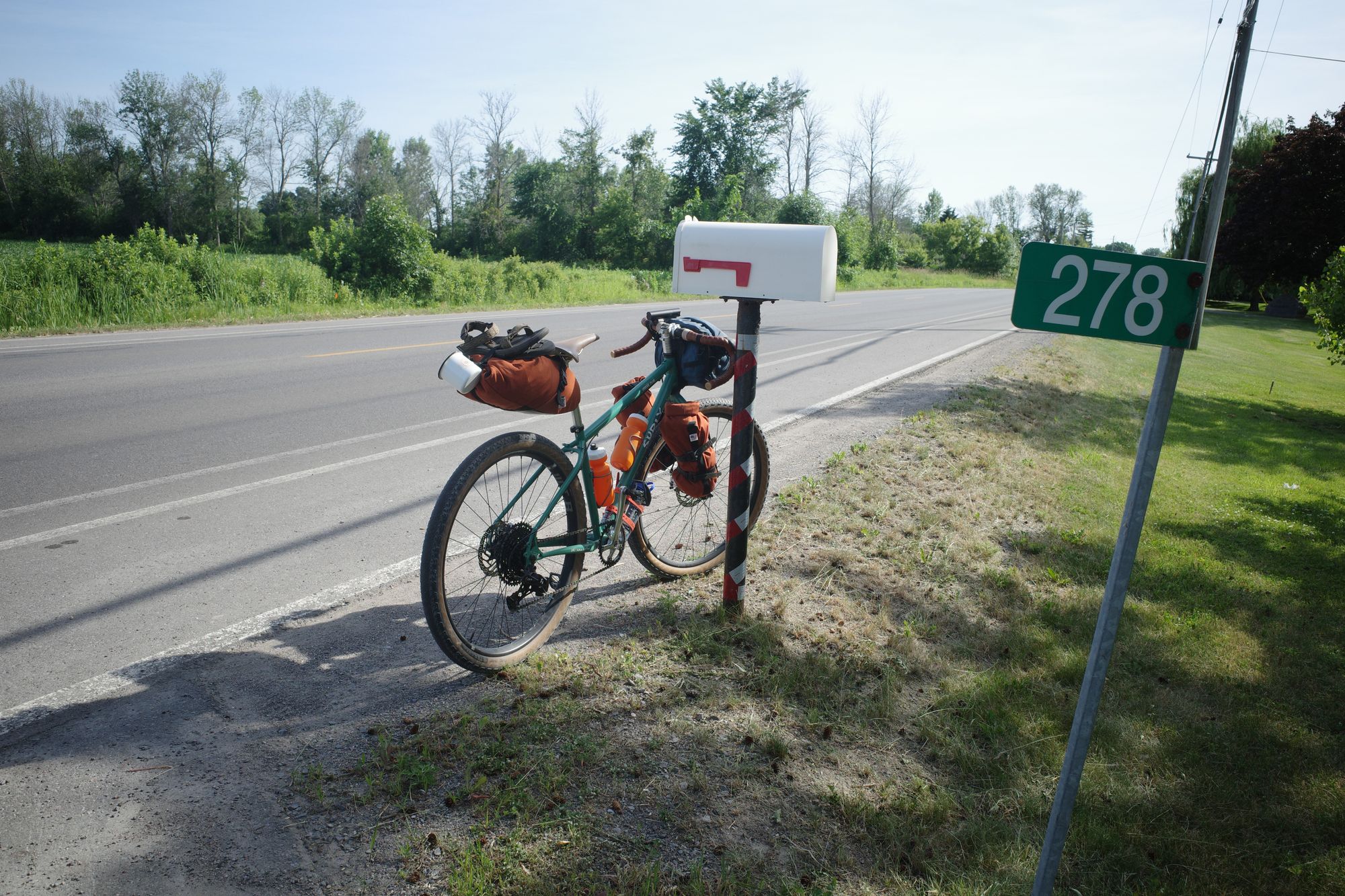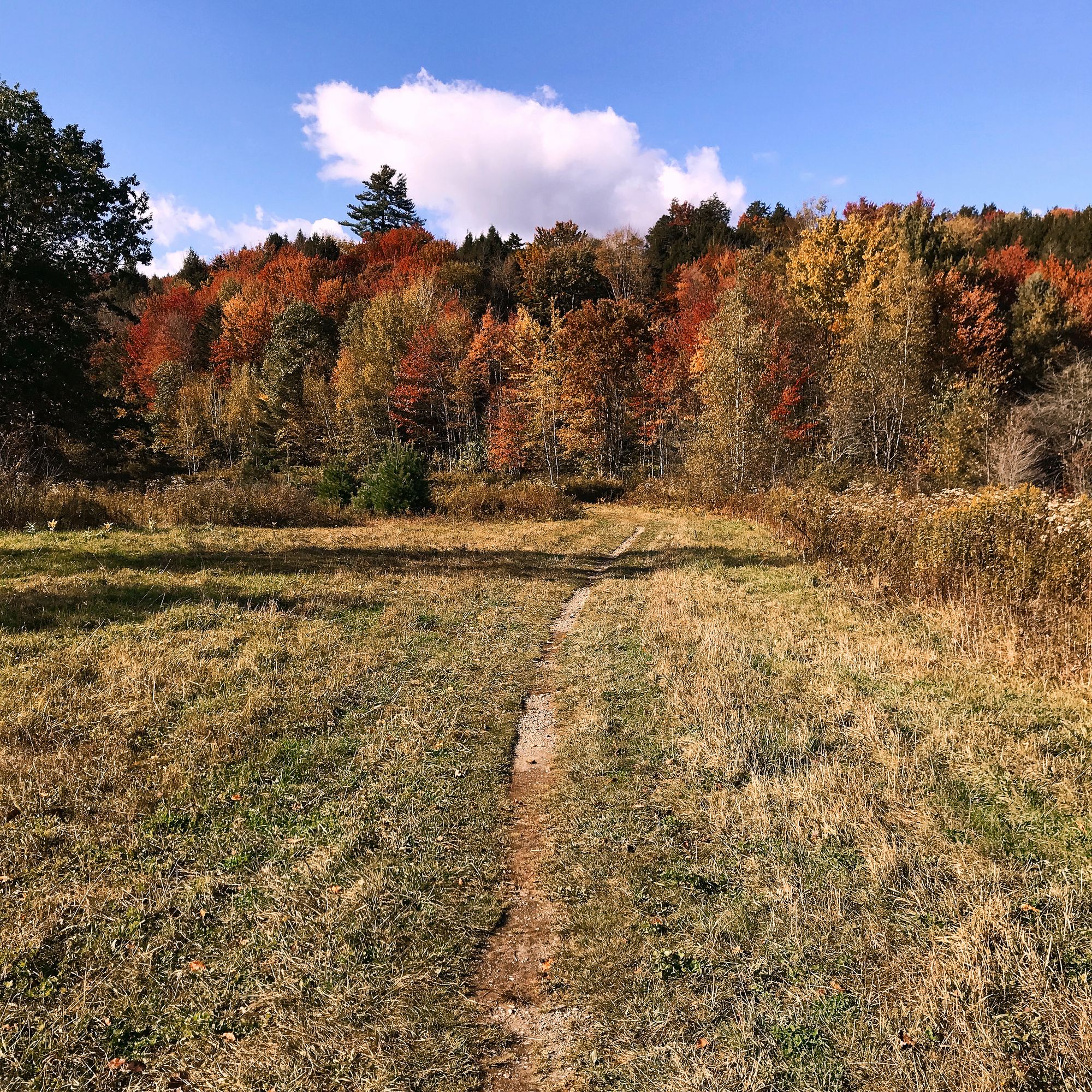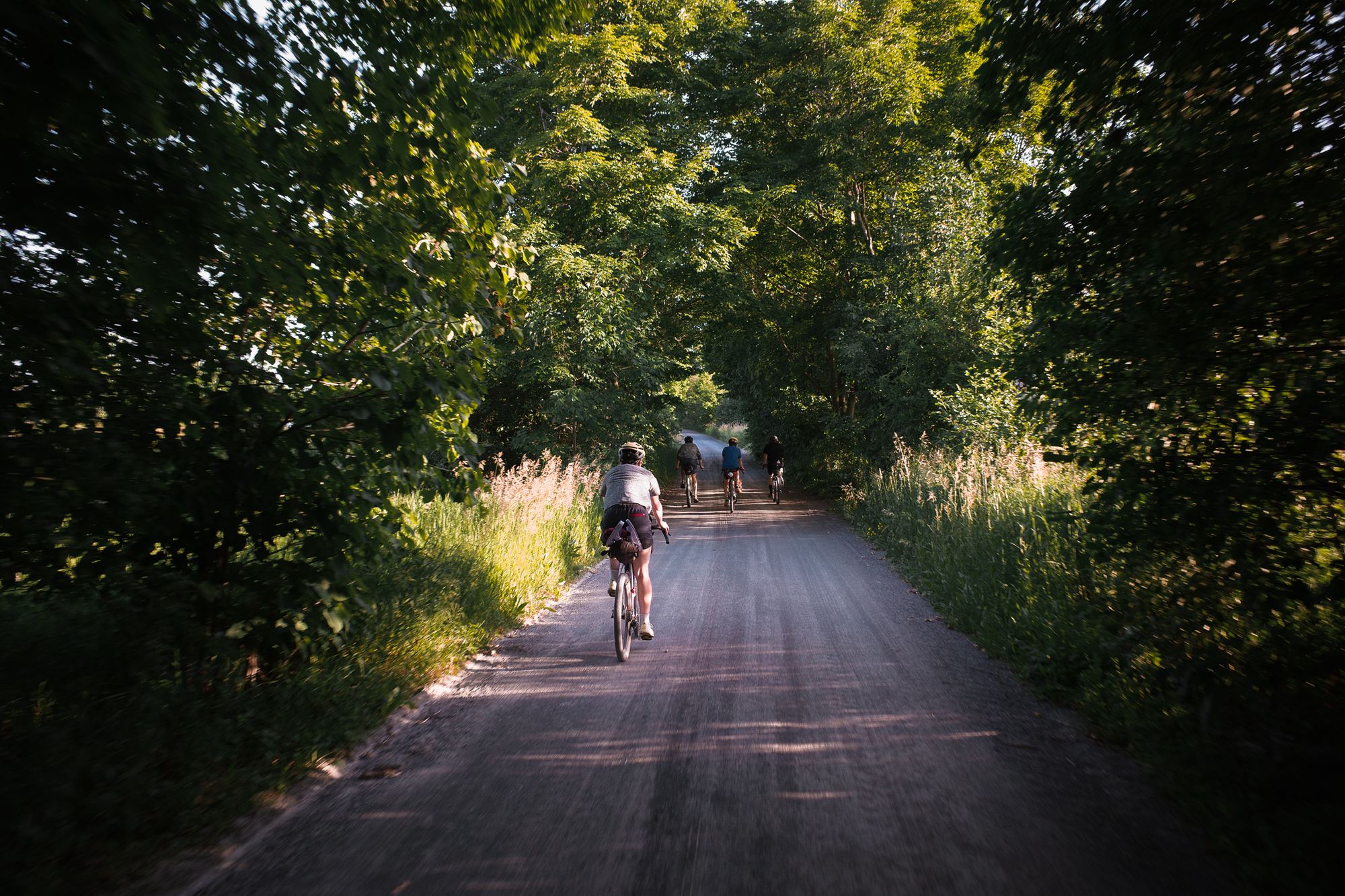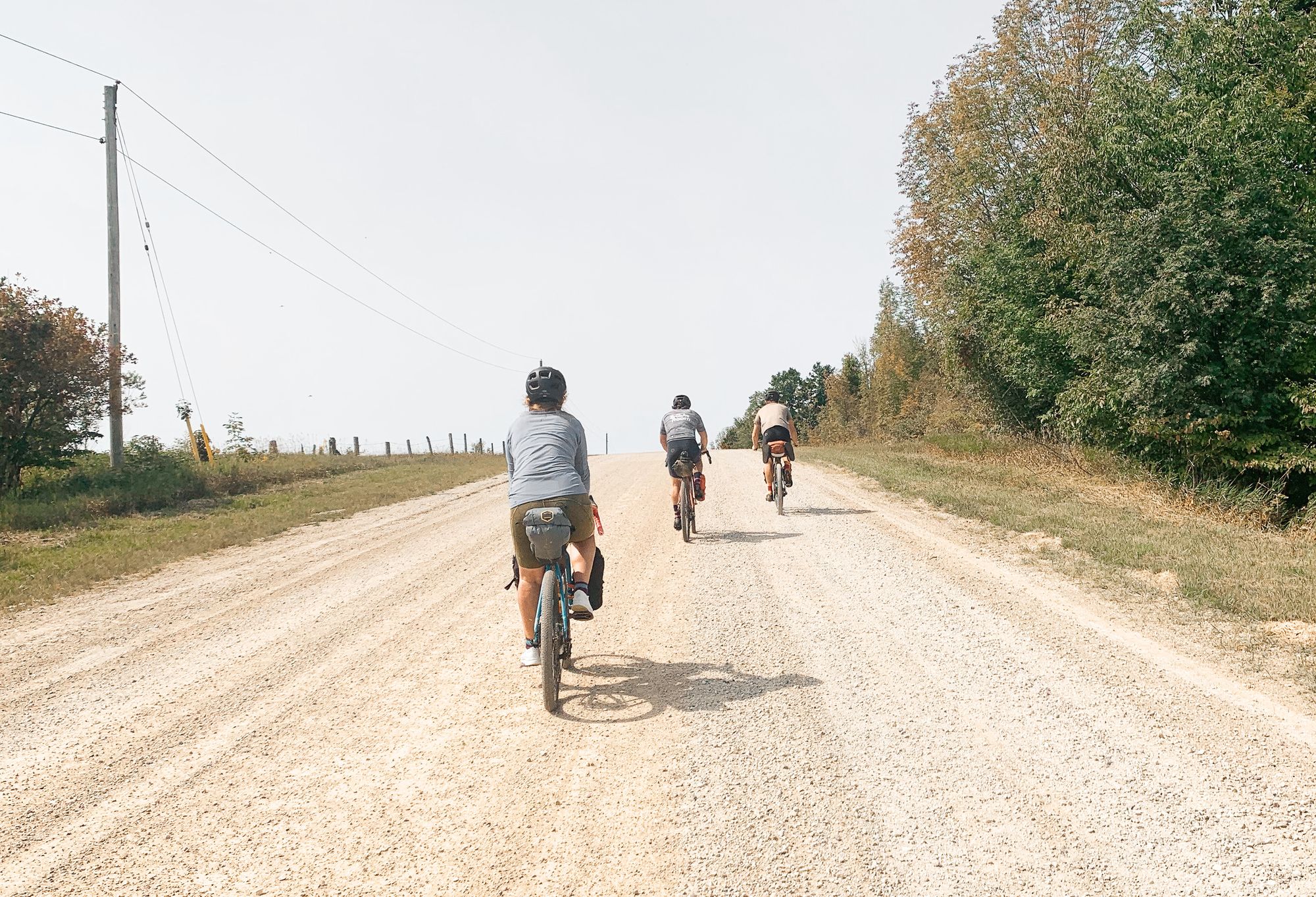I used to think that all bags were created equally and that making use of bags I already owned would always serve me well. But just like investing in the gear required for many other activities, choosing the right bikepacking bags made a huge difference when it came time to improve my riding experience.
Backpacks, while ubiquitous, simply aren't designed to be the best choice for bikepacking bags.
Most of us have at least one backpack in our lives, and chances are good that it's made its way on to a bike ride more than once. But it's also likely to have left us with a sweaty, sore back--not to mention, a requirement to make a full stop every time we want to access snacks, sunglasses, or extra layers.
It doesn't need to be this way.
I'm not here to tell you which brand of bikepacking bags you should choose, but I am here to help lay out the options for creating a modular bikepacking bag setup that'll work for a variety of different types of rides, giving you easy access to your supplies while leaving your body feeling comfortable: the purpose that the best bikepacking bags are specifically designed to serve.
How to Choose Bikepacking Bags
If a backpack has been your go-to cargo solution so far, the first question you'll want to ask yourself is, "How full is my 30L backpack?" Are you often using it at about 20% capacity, carrying your keys, wallet and phone? Maybe a 10L handlebar bag would suit better. Is it filled up with layers, food, and other gear for a day or overnight ride? This is where a seat bag, basket, or some combination of both will shine.
If you're typically a no-bag rider or if you haven't been on many rides over 10km, consider the points of friction you've encountered on your rides so far. For me, this calls to mind a cross-body bag that I used to wear to carry my essential gear, but that would often swing down from my back as I rode, throwing me off-balance or interfering with my knees. This is where my now go-to bikepacking bag saves the day: the stem bag. No matter what type of ride I'm headed out on, a stem bag is always part of my setup.
A Breakdown of Basic Bikepacking Bag Types
- Handlebar Bag:
Day Ride: A 4-6L handlebar bag is a minimalist bikepacking bag meant to store almost everything you could need while on a day ride. A great handlebar bag is accessible while riding, usually thanks to a rear-facing zipper (like the Atwater Grubber) or an elastic cord (like the Swift Industries Paloma). These are two very different bags, but both can contain a wind layer, snacks, tools and a tube, plus more. A single handlebar bag keeps you hands-free and comfortable.
Overnight Ride: Keeping bulkier items between your arms means you'll be more stable on the types of varied terrain you're likely to encounter while overnighting by bike. When camping with my husband, we often keep our tent in his Swift Zeitgeist handlebar bag, while I use my Roadrunner Randonneur style bag as the food cooler.
- Stem Pouch
Day Ride: As mentioned above, a stem pouch is my ride-or-die: I use it every day to stash my keys, mask and lip balm on my commute, and I add a small tube of sunscreen and a snack to it for day rides. The drawcord functionality makes them great for things you may want to grab quickly while riding.
Overnight Ride: For a bikepacking trip, a stem pouch can be handy for the same types of things you might stash in your car's console: sunscreen, sunglasses, a small snack or your phone. Since they're cylindrical and dont have a zipper, a stem pouch can also fit a water bottle.
- Top Tube Bag
Day Ride: Top tube bags function similarly to stem bags, but they feature a zipper rather than a drawcord. They come in a variety of sizes and offer secure storage for items like a cell phone that you may be concerned about while bumping around on gravelly climbs.
Overnight Ride: The functionality of a top tube bag is similar on both day rides and overnight. They provide storage that's easy to access though a bit more securely stashed than the grab-bag style of a stem pouch.
- Cargo Bags
Day Ride: Typically not used for shorter day rides or S24O trips. Cargo bags provide harder-to-access but still-useful capacity for multi-day trips, and you probably won't want to keep them on your bike when you aren't using them.
Overnight Ride: You might use fork-mounted cargo bags for soft goods like clothing or sleeping gear, or food that you plan on eating at camp, rather than snacks you'll want to have easy access to while riding.
- Frame Bag or Half Frame Bag
Day Ride: Typically not used for shorter day rides. Mounting a full frame bag often requires covering up one or more of your bike's standard water bottle cage mounts, which you might find isn't ideal for day rides. A half frame bag could come in handy on longer rides for carrying a pump, tubes, or backup snacks, but isn't our first pick for this purpose.
Overnight Ride: This is where your Full or Half Frame Bag is meant to come in handy. In order to keep your bike’s center of gravity low, a frame pack is best for stowing heavier items like tools and tubes, a stove or food.
- Seat Bag
Day Ride: Typically not used for shorter day rides unless you must have the capacity for a variety of extra clothes or a picnic blanket.
Overnight Ride: The seat bag is a quintessential overnight bikepacking module because it's "stuffable" and well-suited to sleeping gear or overnight layers that you won't need to access while on the road.
With all those options to choose from, your mind might be racing. Here are a few of our friends' bikepacking bag setups for inspiration:
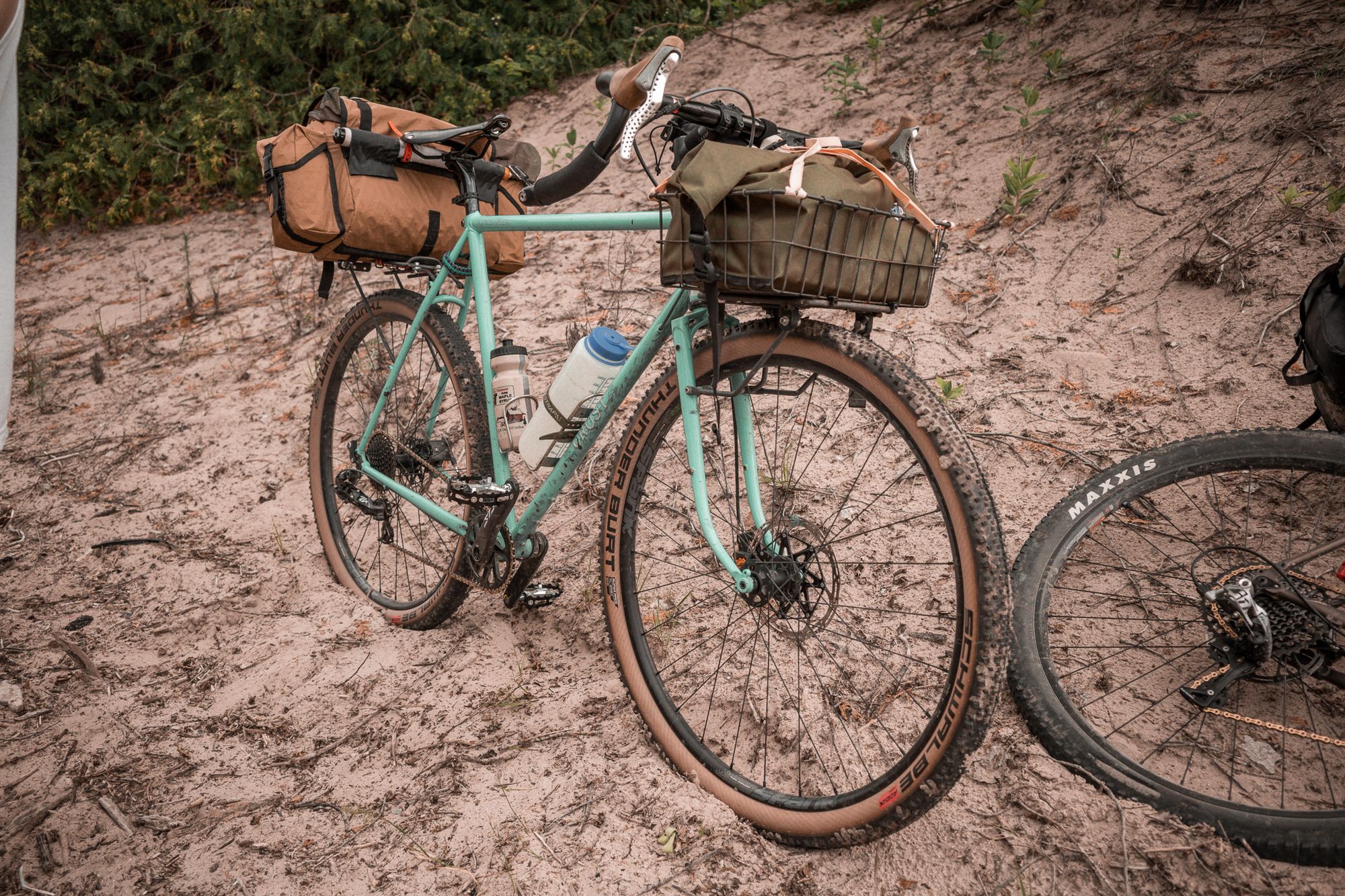
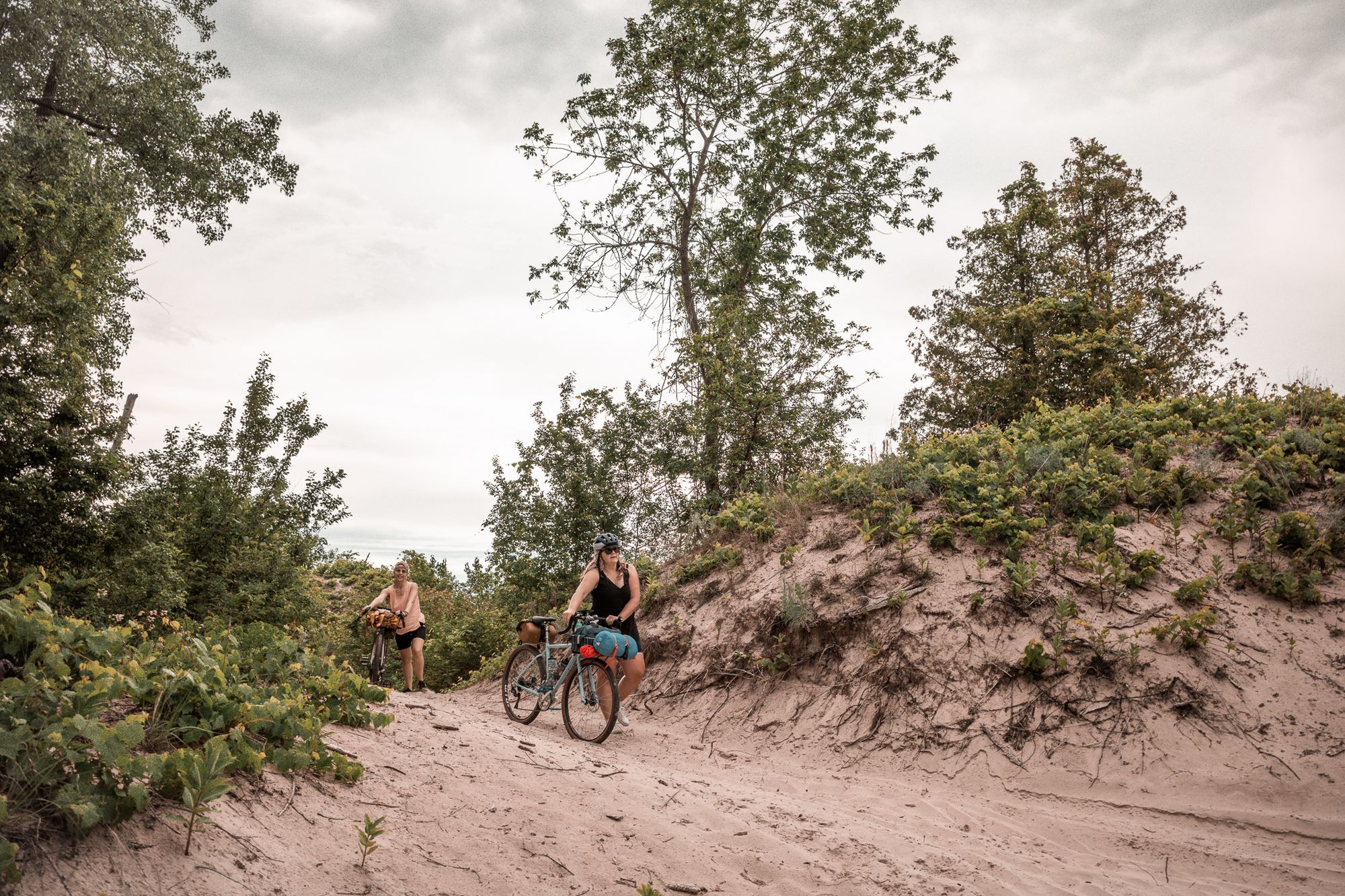
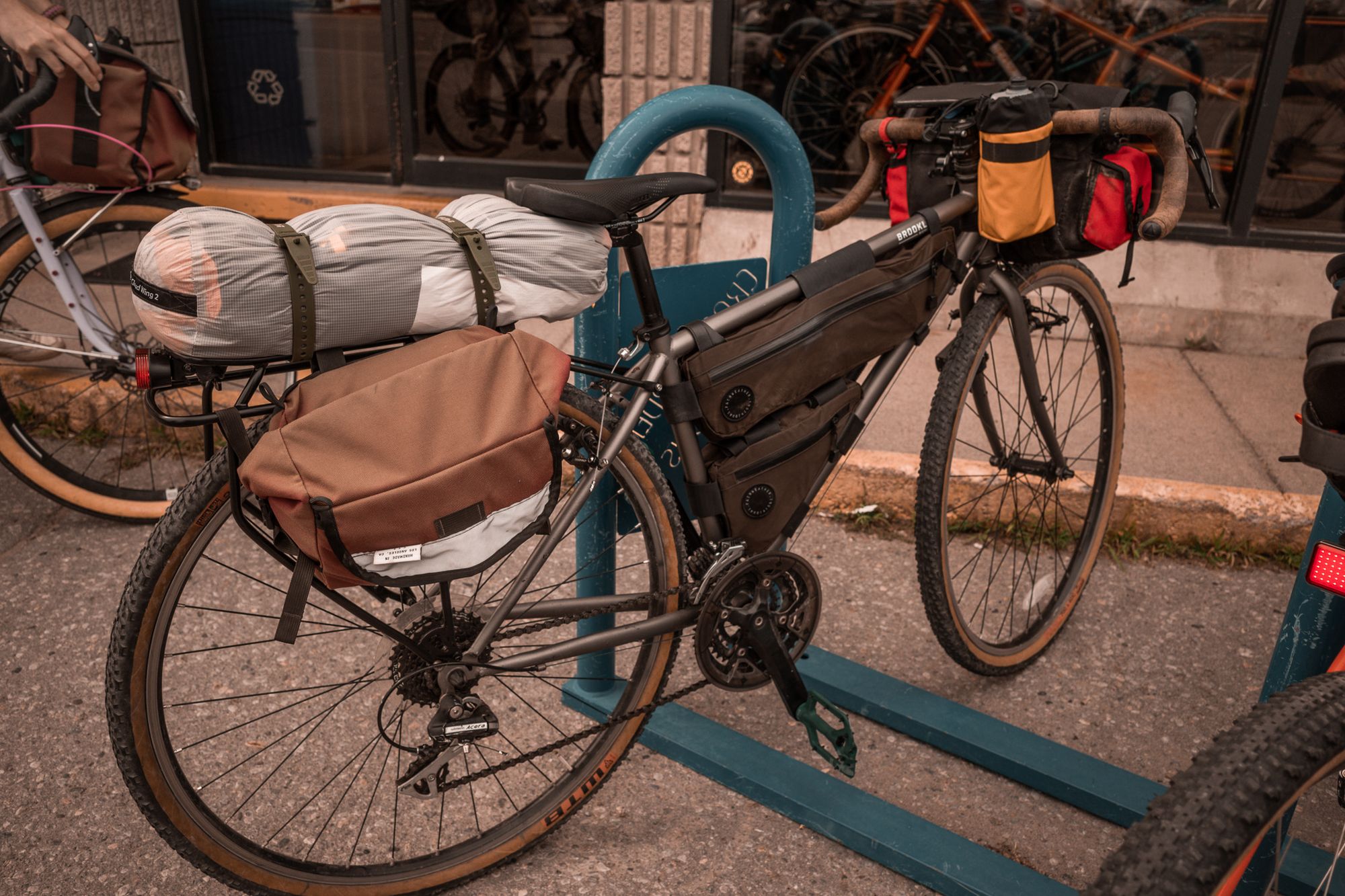
Where Did All The Panniers Go? 🤔
You might have noticed that one well-known bike storage solution didn't make the cut: panniers. While they might be the first thing that comes to mind when you think of bike bags, this style of bag can have drawbacks, especially when it comes to uneven terrain.
First, panniers often require a rack, which adds extra weight to the back of your bike, making it harder to navigate rocky or uneven roads. Front panniers are an option, but again--they add extra weight to the lower section of your bike, changing your centre of gravity.
While they might be necessary and useful depending on the type of ride you're undertaking, there are many other options on the market now that provide lighter-weight, more modular storage than traditional panniers and can offer additional functionality that's better suited to different types of riding.
Help! I Think I Might Still Need A Backpack... ��
Hey, it happens: I'm not here to insist you donate your backpack.
If you've loaded up your bike and exhausted all the other options, and still need to carry more, there may still be a need to bring your backpack on a ride.
If this is the case for you, make sure that you plan your packing lists to avoid packing your backpack with heavy items, or ones you might need to access on the fly. Some bikepackers use a back-mounted hydration pack, and this can be a great solution for storing extra water. Just try to keep back-mounted storage to 20L or less to mitigate friction and anxiety during your rides--isn't that what bikepacking is all about?

